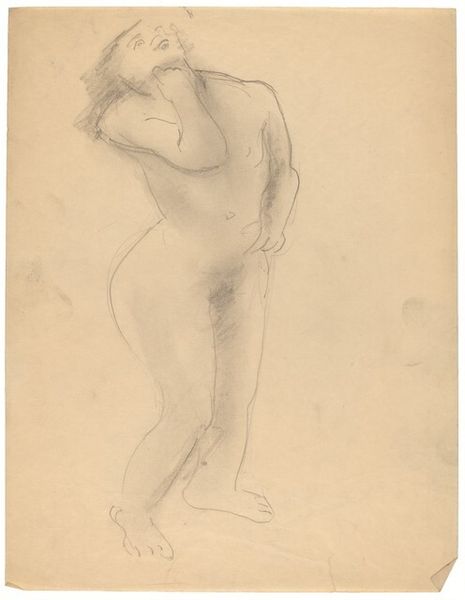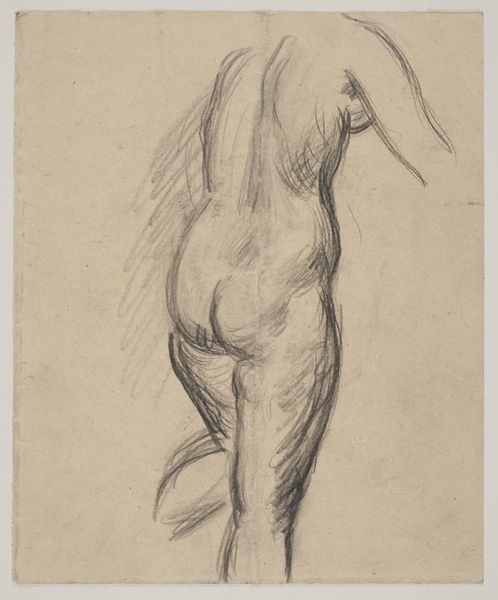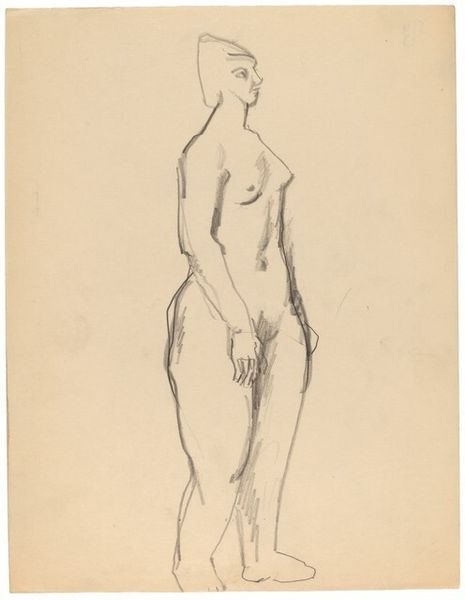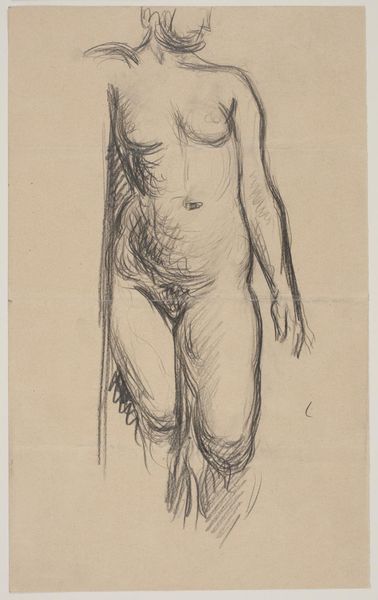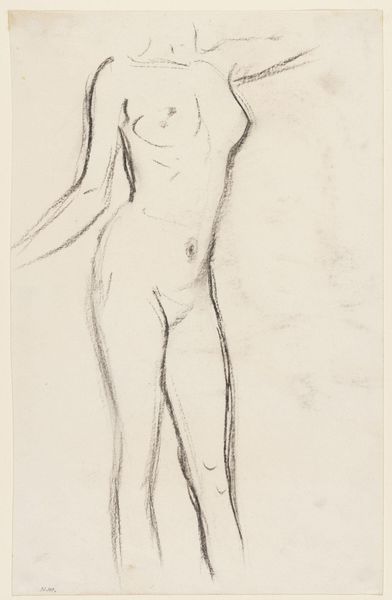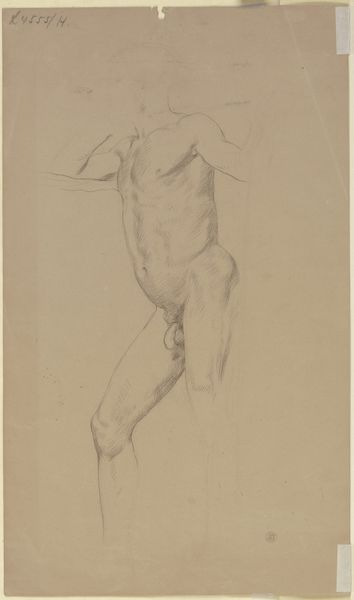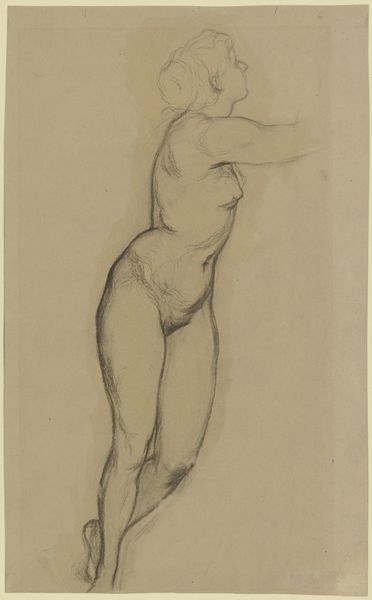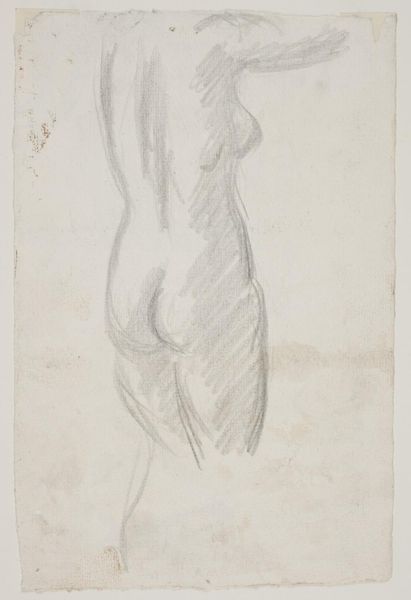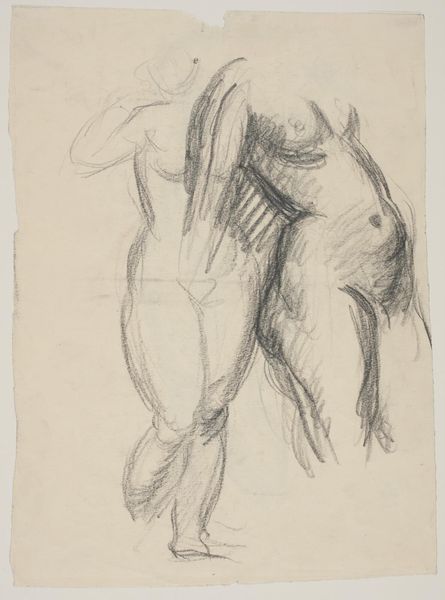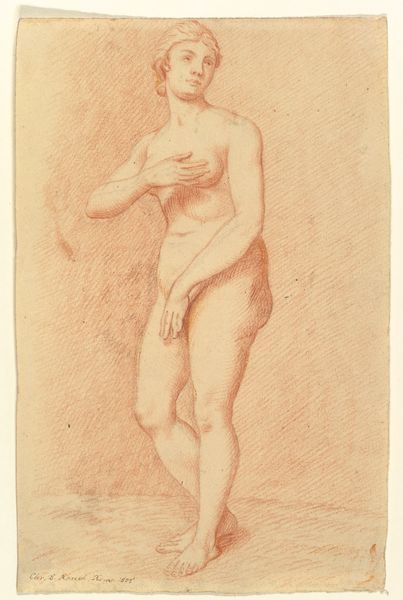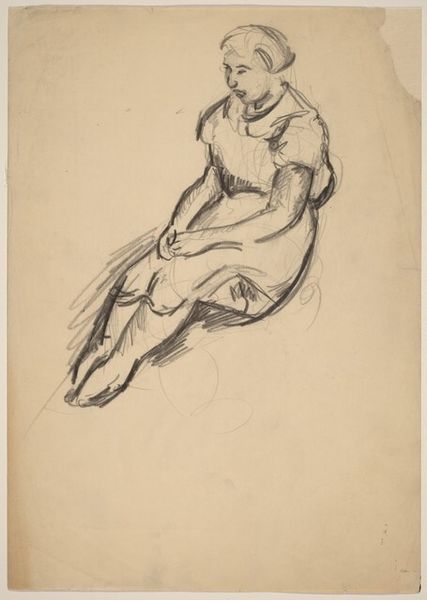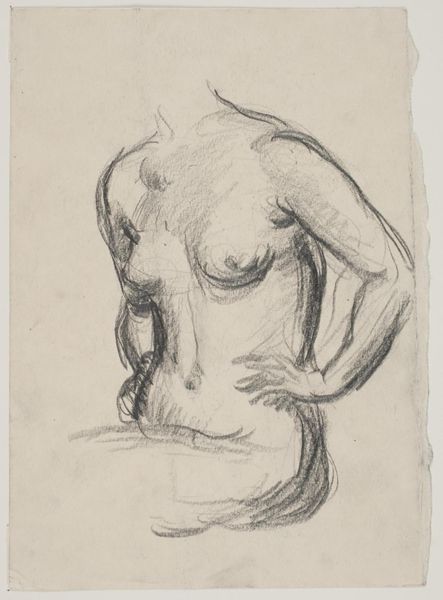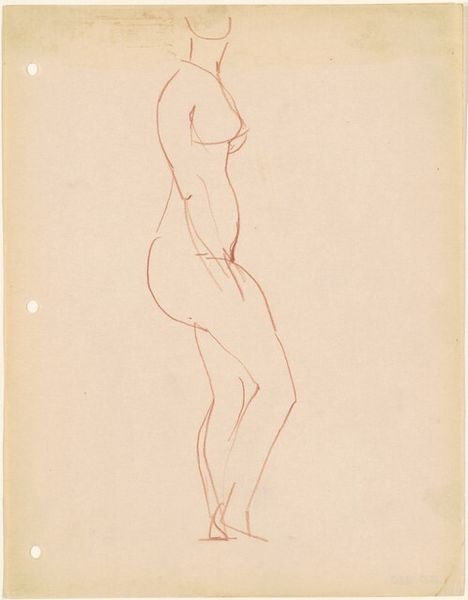
drawing, pencil
#
portrait
#
drawing
#
new-objectivity
#
pencil sketch
#
pencil drawing
#
pencil
#
expressionism
#
portrait drawing
#
nude
#
realism
Dimensions: overall: 66.4 x 37.8 cm (26 1/8 x 14 7/8 in.)
Copyright: National Gallery of Art: CC0 1.0
Curator: Here we have Otto Dix's "Standing Nude," a pencil drawing from the 1920s. Editor: Stark. Immediately, it strikes me as austere, even bleak. There's a raw, almost uncomfortable honesty in the rendering. Curator: Yes, the piece evokes the aesthetic and social landscape of the Weimar Republic. Dix's unflinching realism challenged the period's conservative notions of beauty. This work begs questions of how women were perceived, especially after the devastation of the First World War. Editor: The way he uses the pencil, the quick, almost frantic strokes…you can almost feel the scarcity, the material realities pressing on the artist, and, of course, the model. Look at the worn quality of the stockings, for instance. Curator: Exactly. There’s an argument to be made that it comments on the economic hardships faced by many women during this era and the necessity of having to prostitute themselves to survive. She appears almost confrontational, pushing back against objectification. Editor: That's interesting, that gaze definitely challenges you. And yet, looking closer at the material production—it is “just” pencil on paper, isn't it? Such unassuming materials deployed to such evocative effect. And it makes you consider the value assigned to works on paper versus oil on canvas in those days. Curator: And even today! Think of the broader context of gender and labor, then and now, reflected in the value systems placed upon the artist’s chosen medium and the model's pose. Editor: It's fascinating how this simple sketch, using readily available materials, becomes a powerful document of a specific socio-economic moment. Thank you for pointing out those crucial historical layers. Curator: Of course. It’s the lens through which art offers a complex, often uncomfortable reflection of power dynamics. Editor: And it goes to show that focusing on process can reveal just how powerful a simple medium like pencil and paper can become, freighted with social and political implications.
Comments
No comments
Be the first to comment and join the conversation on the ultimate creative platform.
